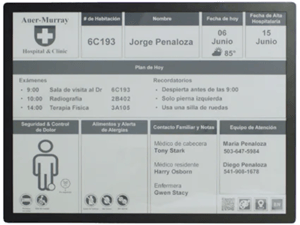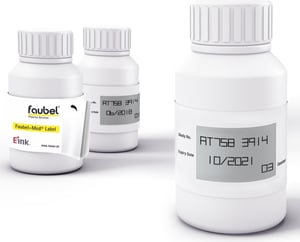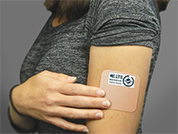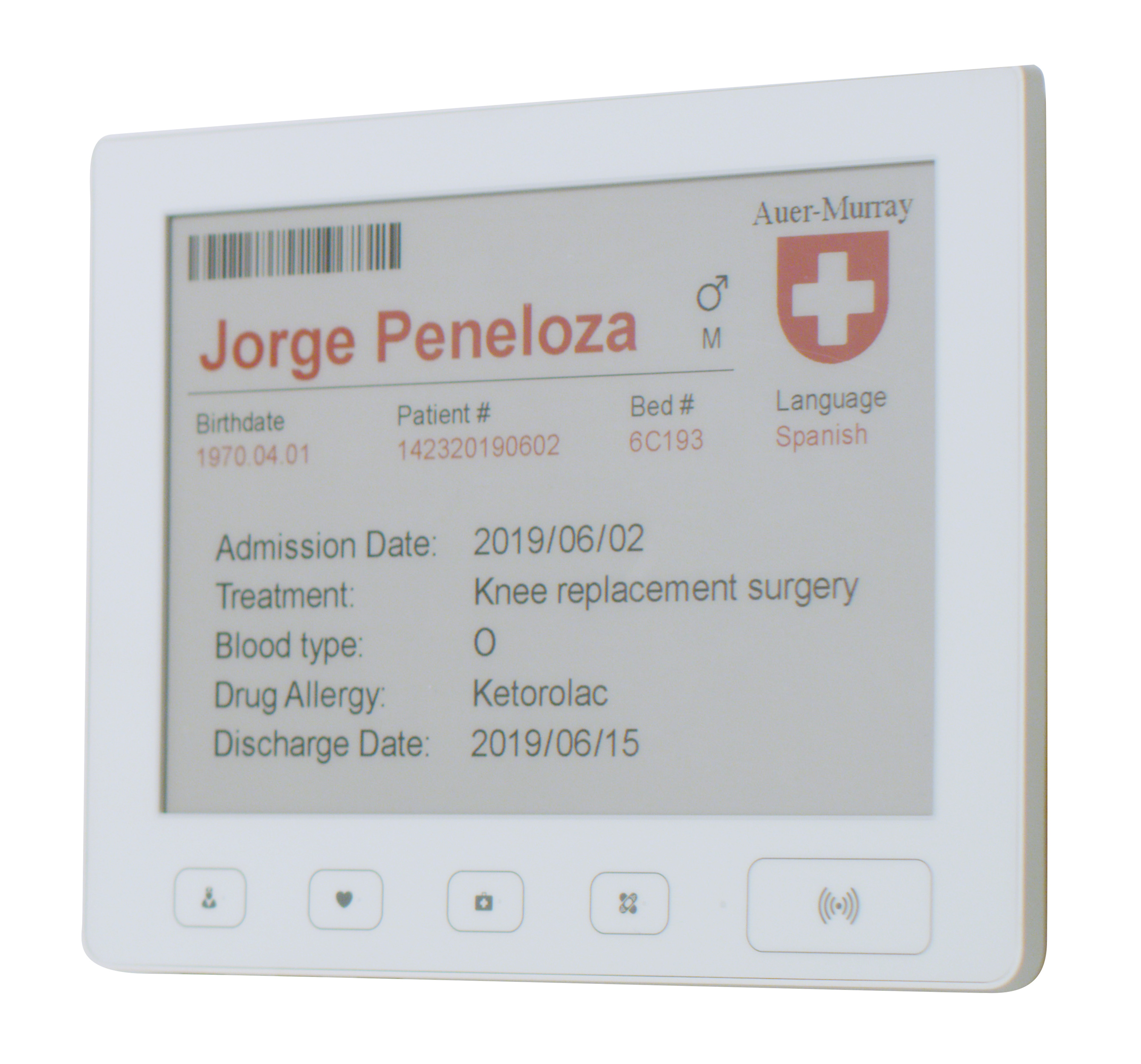Welcome to Future Ink: a series on how E Ink technology pushes the boundaries between industries to put Creativity on Display. This is the first post in the series. For more futuristic ideas from E Ink, read our blog at blog.eink.com.
As the world around us gets smarter every day, how will those technologies be integrated into existing systems? The smartest technology is one that meshes seamlessly into existing processes, acting as a conduit between us and the world we live in. Let’s take a look at what the hospital of the future will look like.
Accurate Information
When it comes to displays, their number one purpose is to make sure information is shared quickly and accurately. Hospitals are one of the most vital settings for accurate, reliable information. Whether it’s an updated course of treatment or an allergy to a medication, healthcare providers require accurate information at their fingertips. Because of inherent qualities like flexibility, ruggedness and low-power, E Ink digital paper displays have potential for endless applications to fulfill this need in the medical world.
Digital Paper Displays
 Providers often rely on analog sources of information, like a whiteboard in a patient’s room or a clipboard with printed paper charts. By changing these manual methods over to digital, a hospital system would be given the capability of updating information between a chart, electronic health records, and inside a patient’s room as soon as the info is input into a system.
Providers often rely on analog sources of information, like a whiteboard in a patient’s room or a clipboard with printed paper charts. By changing these manual methods over to digital, a hospital system would be given the capability of updating information between a chart, electronic health records, and inside a patient’s room as soon as the info is input into a system.
Digital paper displays can also have a positive impact on the patient experience. Healthcare providers and family members alike would be able to access up-to-date information, enabling clearer communication. And by providing this information on reflective digital paper rather than a light-emitting, disruptive LED screen, patients can get the sleep they need.
Smart Med Bottles
 Digital paper can also be incorporated into items like medication bottles, displaying what medication is inside and dosage directions. When paired with sensors, the bottle can monitor environmental triggers and flip the label to indicate if the medication has encountered too much moisture, expired or even been tampered with. Throughout clinical trials, administrators could update dosage information without the need for relabeling, saving important researchers time, money and materials.
Digital paper can also be incorporated into items like medication bottles, displaying what medication is inside and dosage directions. When paired with sensors, the bottle can monitor environmental triggers and flip the label to indicate if the medication has encountered too much moisture, expired or even been tampered with. Throughout clinical trials, administrators could update dosage information without the need for relabeling, saving important researchers time, money and materials.
Connected Medical Devices
 Digital paper can even be incorporated into medical devices, like a smart patch that administers medication. Medical adherence is an issue that, according to the New England Healthcare Institute (NEHI), costs the U.S. $290 billion a year. Patients forget to take medication, or accidentally take extra doses, straying from the proper schedule that their provider created.Smart patches were created to address adherence issues. Since digital paper is flexible, it can easily integrate into an adhesive medical patch that sticks to the patient’s arm. The digital paper display can remind patients when it’s time to take a dose, and display last dosage information to make sure they’re not accidentally doubled up on.
Digital paper can even be incorporated into medical devices, like a smart patch that administers medication. Medical adherence is an issue that, according to the New England Healthcare Institute (NEHI), costs the U.S. $290 billion a year. Patients forget to take medication, or accidentally take extra doses, straying from the proper schedule that their provider created.Smart patches were created to address adherence issues. Since digital paper is flexible, it can easily integrate into an adhesive medical patch that sticks to the patient’s arm. The digital paper display can remind patients when it’s time to take a dose, and display last dosage information to make sure they’re not accidentally doubled up on.
The medical industry adopt technology that aims removes obstacles, rather than creates them. Digital paper technology – in its many forms and uses – provides up-to-date information, enabling medical providers to focus on what matters most: giving their patients the care they deserve.
For more on E Ink and futuristic, connected hospitals, check out our white paper Digital Paper in Smart Hospitals: Upgrading the Patient Experience.


Leave Comment